Estimated reading time 14 minutes, 15 seconds.
A year-round resident of Canada’s west coast, the belted kingfisher is a formidable hunter, patiently scanning waterways from high watchpoints to locate its objective before plunging in a steep dive to secure its target — attributes any search and rescue (SAR) aircrew would appreciate. And, not surprisingly, a fitting moniker for a SAR aircraft. Canadians certainly agreed.
Kingfisher was the preferred choice of both the Royal Canadian Air Force (RCAF) search and rescue community and an online sample of Facebook followers for the Airbus-built CC-295, a new fixed-wing SAR aircraft that began arriving at 19 Wing Comox, B.C., in the fall of 2020.
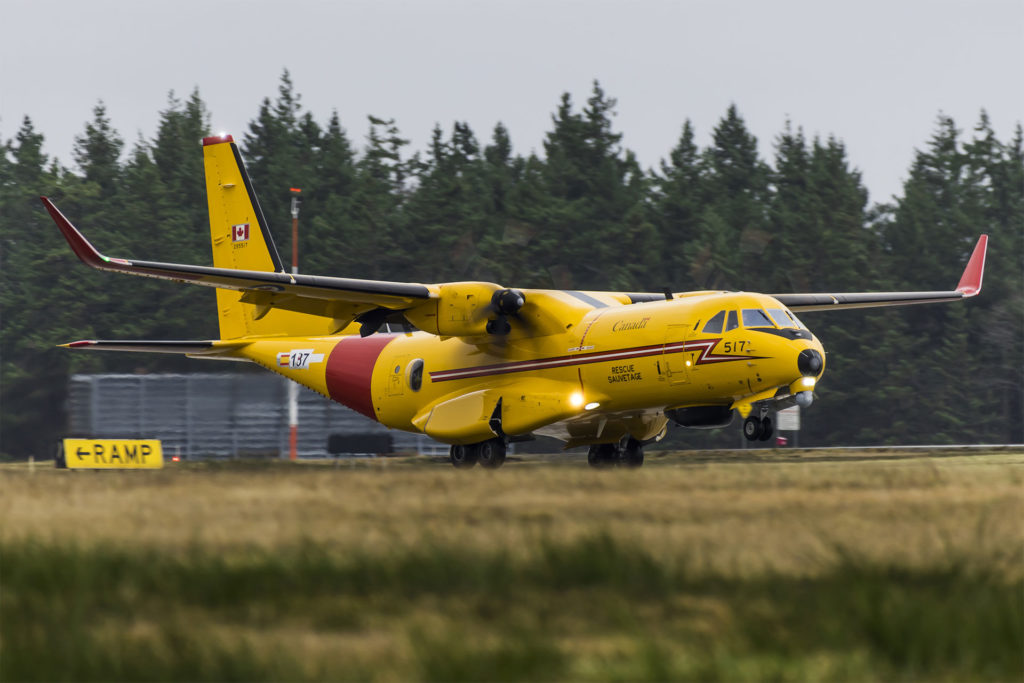
In the summer of 2019, after canvasing aircrews, SAR technicians, and maintenance personnel for appropriate names, the RCAF posted a poll of five contenders on Facebook. At the time, the page attracted around 6,000 to 8,000 viewers per day; when the poll went live, almost 40,000 people viewed the page that first day.
Like the Air Force SAR members, most opted for the Kingfisher. In fact, the bird received almost twice as many votes as its nearest competitor, Canso II — a tribute to the amphibious Canso, which was a variant of the U.S. Navy’s Catalina. Also in the running were Guardian, Iris, and Turnstone.
“Kingfisher has a strong Canadian connotation,” said BGen Colin Keiver, director general, Air and Space Force Development. “It has a strong link to the First Nations of the Northwest. It has long been recognized for its speed and its agility, for its search and hunting skills. It resonated with the Canadian public, and because it is a bird [that flies over water like the Cormorant, the RCAF’s search and recue helicopter], it seemed to be the right fit.”
Before proclaiming a winner, though, the Air Force had to do its due diligence, resolving possible legal issues and trademark infringements. Guardian, for example, had been removed from the final list once it became apparent there were multiple trademark risks, including Viking Air’s Guardian 400 — a new version of the iconic De Havilland Canada DHC-6 Twin Otter.

Kingfisher had fewer issues. One possible conflict was with KingFisher Boats of Vernon, B.C., which has been building watercraft since 1959. “We reached out to them directly because they’re Canadian, and they were more than happy to have Kingfisher attached to the SAR aircraft,” said Keiver.
On Sept. 25, 2020, the RCAF made it official, marking the arrival of the first operational CC-295 in Comox with a naming ceremony attended by the Minister of National Defence, Harjit Sajjan, and RCAF Commander, LGen Al Meinzinger.
Managing Transition
With the first Kingfisher on the ramp at 19 Wing Comox, the Air Force is now conducting initial training and operational testing. The CC-295 will replace six CC-115 Buffalos operated by 442 Transport and Rescue Squadron in Comox, which entered service almost 50 years ago, as well as several of the 12 CC-130 H-model Hercules that perform a SAR role with squadrons at 8 Wing Trenton, Ont., 14 Wing Greenwood, N.S., and 17 Wing Winnipeg, Man.
Airbus was awarded a $2.4 billion contract in December 2016 for acquisition of 16 aircraft, plus 11 years of in-service support (ISS). The deal includes the option for 15 years of additional ISS. Production in Spain was briefly disrupted by the COVID-19 pandemic, but aircraft are expected to roll off the line at an average rate of five per year until mid-2022. The final aircraft should be delivered by that fall.
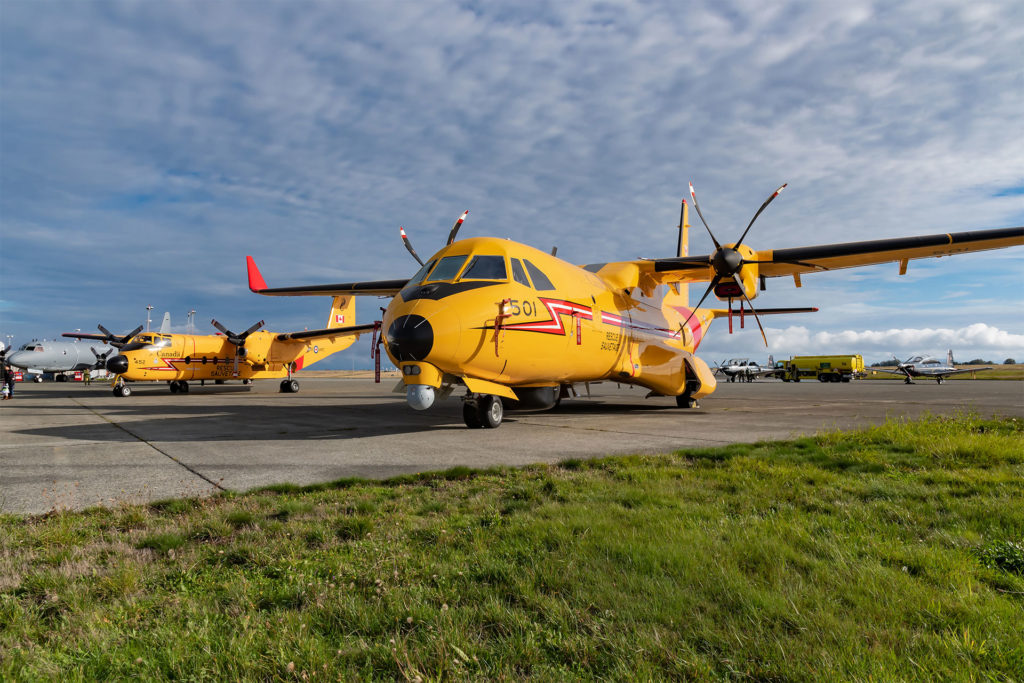
The plan to transition from the venerable Buff and Herc to the Kingfisher has undergone several iterations as the Air Force has adjusted to changes in the acceptance schedule. 442 Squadron will begin the conversion process to the new aircraft, but whether Trenton or Greenwood comes next will depend, in part, on how much longer the RCAF needs to keep its H-model Hercules operational training unit at 426 Transport Training Squadron in Trenton running. “That is weighing into the decisions now,” Keiver confirmed.
435 Transport and Rescue Squadron in Winnipeg will be the last to undergo conversion training on the CC-295. In the interim, it will serve as the “swing space” for crews and aircraft, providing support to the other squadrons when necessary to conduct the SAR mission.
The squadron holds two roles, providing both search and rescue and air-to-air refuelling to the RCAF’s tactical fighter squadrons. Its aircrews are dual qualified, and its four Hercules can be configured from one mission to the next relatively quickly. The Air Force had planned to cease the tanking role as of July 2020. Changes in the CC-295 schedule have pushed that back to the summer of 2022, “but that is contingent on lining up all of these other things on the fixed-wing SAR transition,” said Keiver.
Their “swing” role will be somewhat dependent on requirements in Comox as 442 Squadron goes through its conversion training and the demand for air-to-air refuelling missions.
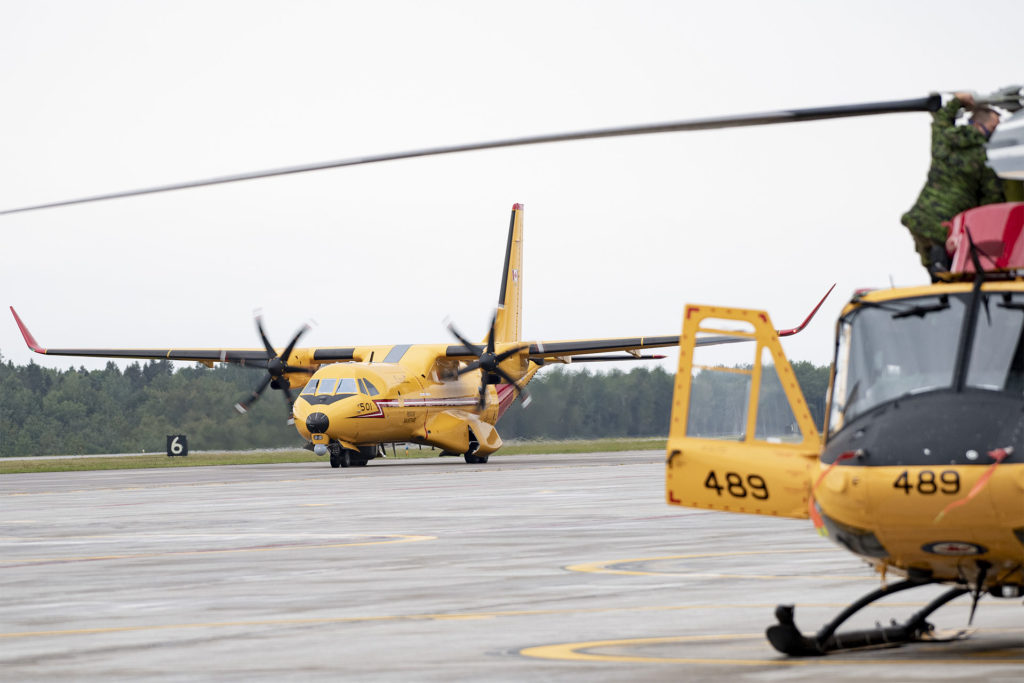
Comox was deemed the logical place to start as the Buffalo fleet nears a much-needed retirement date. 442 Squadron also resides alongside the recently reactivated 418 Search and Rescue Operational Training Squadron and a new SAR training centre set to officially open in February 2021 — making the Wing a hive of SAR activity.
“Once we achieve critical mass on the CC-295 [in Comox], we will cease all Buffalo operations,” explained Keiver. “We will assume SAR standby posture in Comox with the CC-295, [and] convert the rest of the 442 fixed-wing crews over to CC-295. And if there is a requirement for us to backfill SAR standby in Comox because we don’t have quite enough [availability] on the Buffalo or the CC-295, that will be a backfilled from the CC-130H fleet . . . [not] by running Buffs concurrently with CC-295s.”
Moving SAR assets to fill gaps isn’t new. The RCAF often shifts aircraft and crews among its SAR main operating bases when an aircraft unexpectedly requires maintenance or a crew is unavailable. But timing could be everything, noted Keiver. The SAR standby posture is usually at its highest during the summer season when incidents are more frequent. Transitions during winter months may require less need to augment.
The RCAF’s approach will “shape out” over the coming months as crews conduct initial training and the operational test and evaluation program gets underway, he said. “That will give us a good sense of where we need to line up these other things to get us to a point where we see assuming fixed-wing SAR standby with the CC-295 by no later than the summer of 2022.”
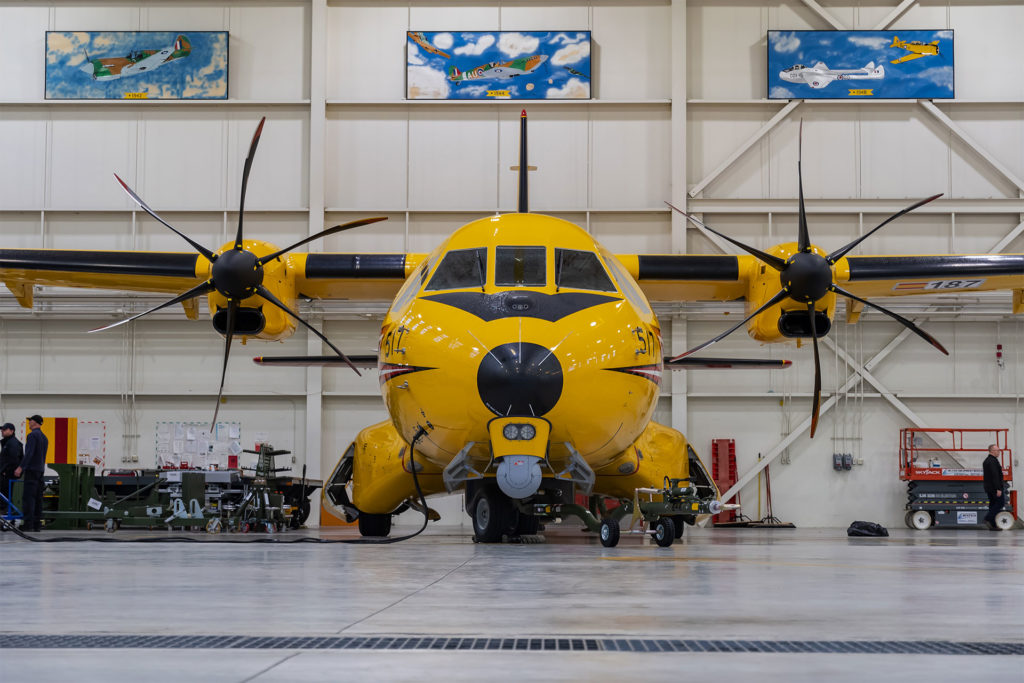
Stand-up of the CC-295 capability in Trenton and Greenwood is scheduled for 2023, while Winnipeg is expected to be operational by 2024.
Testing, Testing
Initial cadre training (ICT) on the Kingfisher began in Comox this November — about a year later than originally planned — with combined crews comprised of members from 418 Squadron, 1 Canadian Air Division Search and Rescue Test and Evaluation Flight (1 CAD SARTEF), and 434 Operational Test and Evaluation Squadron.
The crews from the three units had begun ICT in the fall of 2019 in Seville, Spain, but that was put on pause after several issues were identified, including with the technical publications and checklists related to design changes with the aircraft. The training has resumed in Comox, where the crews are working with simulation and training devices at the SAR Centre of Excellence, which houses 418 Squadron.
Though the CAE-built training centre won’t officially open until February 2021, or reach full capacity until that fall, pilots and maintainers are starting to make use of some of the simulators, such as the cockpit procedures trainer, sensor station simulator, aircraft maintenance trainer, and full flight simulator. “Those things are starting to be used now even as we begin initial training,” said Keiver. “It is helping us collectively sort out any last issues with the devices and align them with the courseware.”

Once they complete ground and simulation training, pilots and sensor crews will then begin flying and operating the CC-295.
In June 2019, a detachment from the Aerospace Engineering Test Establishment (AETE) began aircraft certification and qualification activities in Seville. As AETE’s acceptance work continues in Spain and in Canada, 434 Squadron is preparing to shift to initial operational test and evaluation (IOT&E) in early 2021 to validate the aircraft capability in an operational setting.
“IOT&E is about marrying up the people, the procedures, the tech pubs and checklists, the training and everything else to validate that what we have developed and produced is a functioning fixed-wing SAR aircraft system,” said Keiver, adding that the certification and qualification work will continue to feed the OT&E plan.
The original schedule was “extremely ambitious,” he noted, and developed well before a contract was signed with Airbus. The upside to the delay is that all the testing and training activity is now concentrated in a single location. “We actually see synergies being generated by having everything consolidated in Canada, which will probably allow us to [understand operations and maintenance] quicker than we would have by doing everything in Spain.”
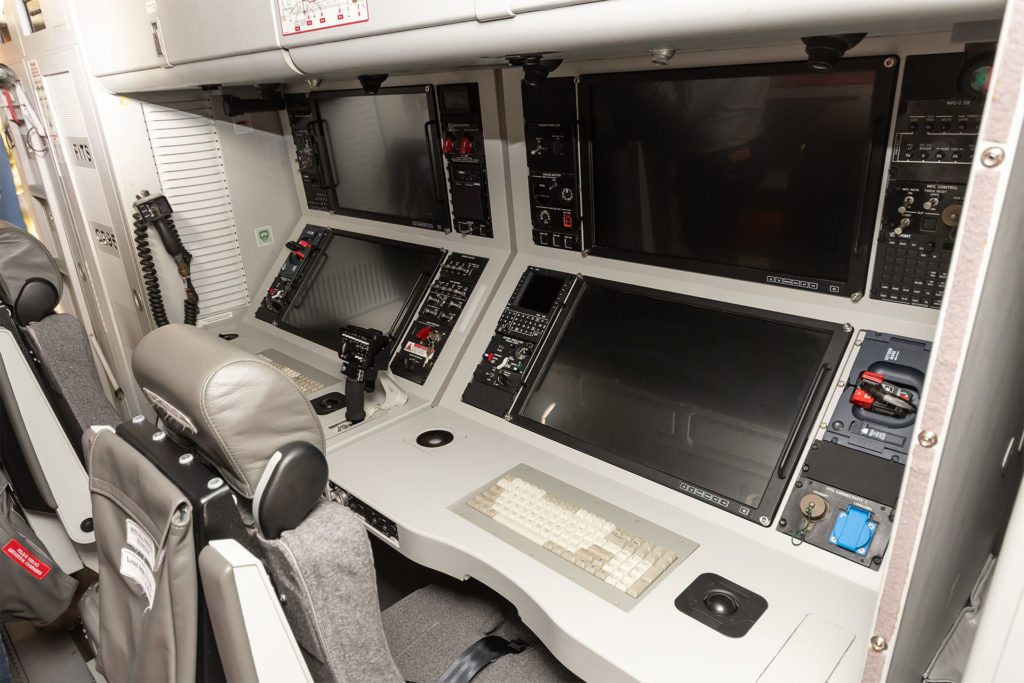
Once ICT is well underway, crews from 442 Squadron will begin making the transition from the Buffalo to the Kingfisher. “By the time we get to summer 2022, we will have a pool of people who are qualified to not just operate the aircraft, but to maintain it — with the requisite support in the background that ensures once we start flying [the] CC-295, we are able to keep doing it and build from there. . . . The last thing we want to do is stop and start the program.”
Delivering the Mission
The Kingfisher represents a dramatic change in how the RCAF will conduct SAR operations. A vast array of integrated sensor systems in the cockpit and the back of the aircraft will take time to fully understand and exploit, said Keiver. “The reality is almost every input from a human factors or technical perspective is being changed or has already changed. This ain’t a Buffalo, and we are working hard to make sure we don’t assume it is a Buffalo (in terms of training and operations). We recognize that we need to be deliberate here. If we go out and try to fly the aircraft like a Buffalo, it’s probably not going to work.”
Among the notable differences is an additional crew member, an airborne electronic sensor operator, to operate the sensor suite alongside an air combat systems officer (ACSO). “The ACSO existed on the Buffalo, but their role . . . is now about systems operation as compared to navigation.”
SAR crews will also have to think more carefully about the kit they carry. The Kingfisher has a smaller cabin than the Hercules or Buffalo, so equipment pallets have been redesigned. “With the CC-130H, we’ve had the luxury of putting everything on just in case,” Keiver acknowledged. “[Now] there will be a basic SAR kit on the CC-295. And then on the shelves in the squadron, everything else that would have been on a CC-130 will be sitting ready to go, and they’ll grab it based on the requirements of the mission. In the end, I don’t see a significant impact on the mission; it’s just a different way of delivering the mission.”

Had the transition schedule gone according to the original plan, the CC-115 Buffalo would have likely reached its retirement date in the summer of 2020 — in the midst of a pandemic where any large gathering was discouraged. The delay may now permit the Buff the send-off it richly deserves. The RCAF intends to keep the CC-115 flying through the 2021 summer SAR season before paying the proper tribute in the fall.
“I won’t commit to a date because every time we think that airplane is done, it finds a way to keep going,” Keiver laughed. “It is truly a remarkable airplane. Kudos to De Haviland Canada for what they built all those years ago. You can bet the RCAF will do something to properly celebrate and commemorate what the Buff has done over the years. It has delivered yeoman’s service.”


Great year for the C295, the most Sevillian Airbus aircraft…Good job and Sic Itur ad Astra
Good looking bird!
De Haviland Canada did build a great plane but it’s all the RCAF maintainers that kept it flying through all the years.
Best project to be part of and exciting time for the Canadian Fixed Wing Search and Rescue
It is late late late….
Head should roll over this crap.? April is over no aircraft in sight!
Pushed back to 2025, indefinite delays for a plane that was supposed to be in service by now.